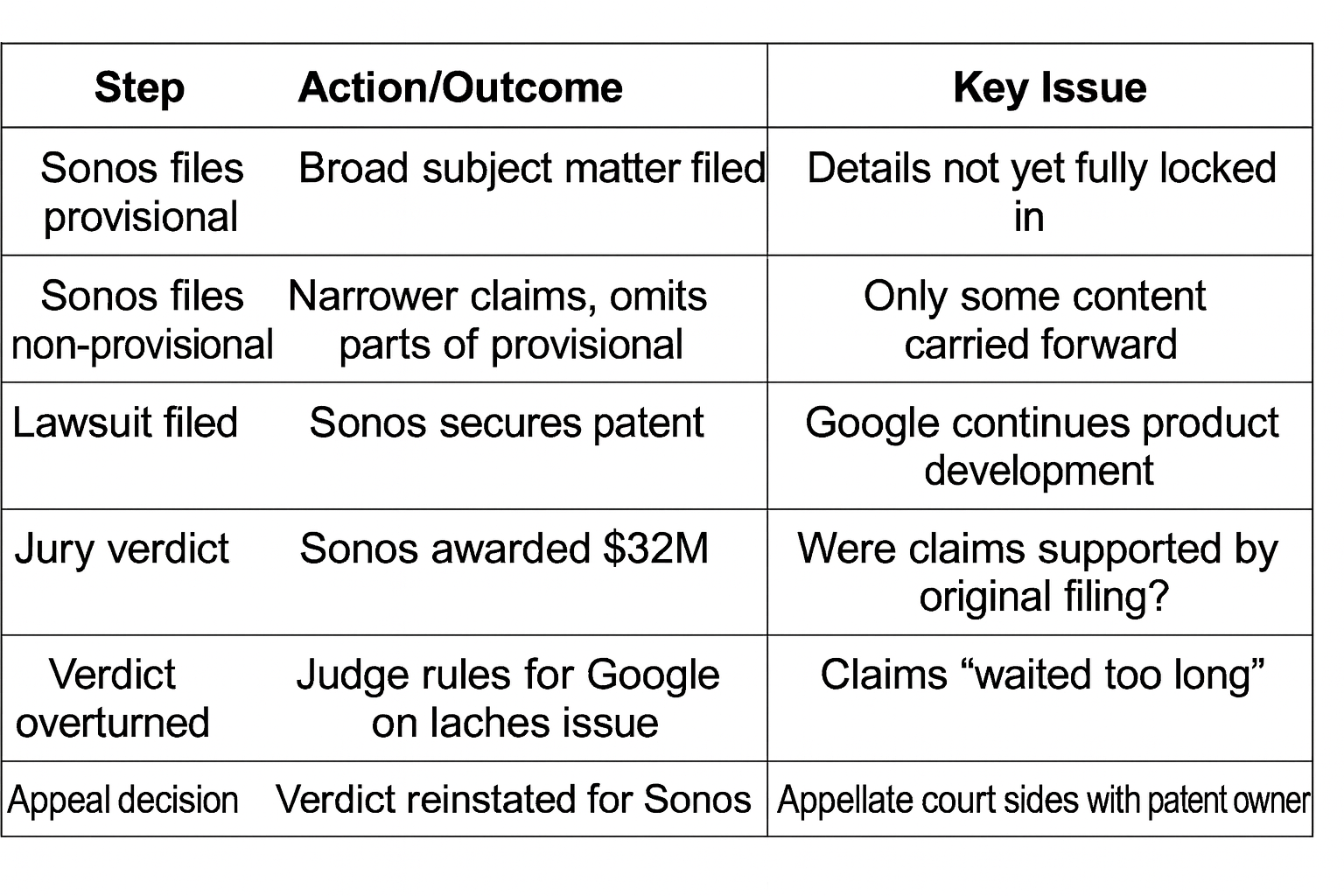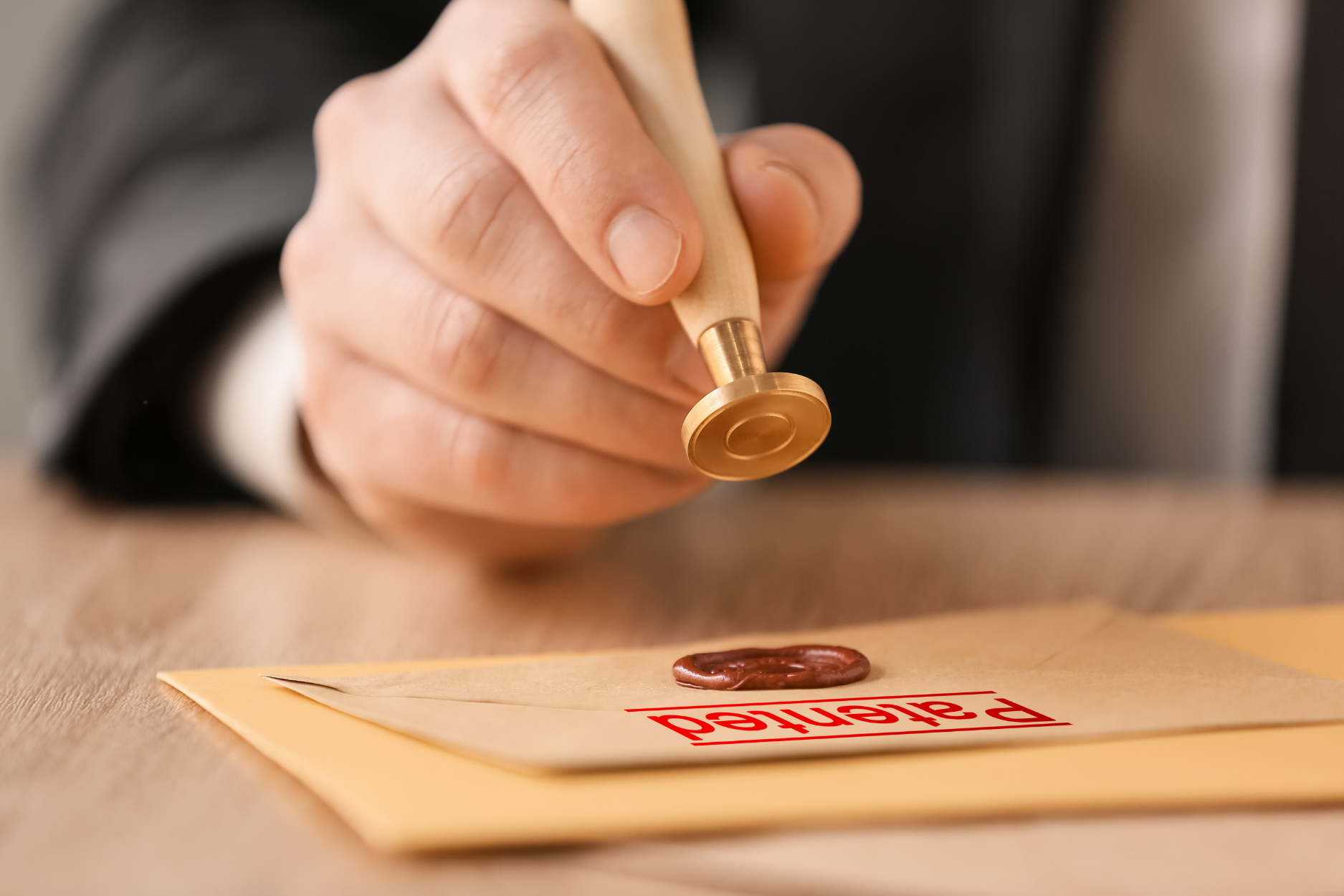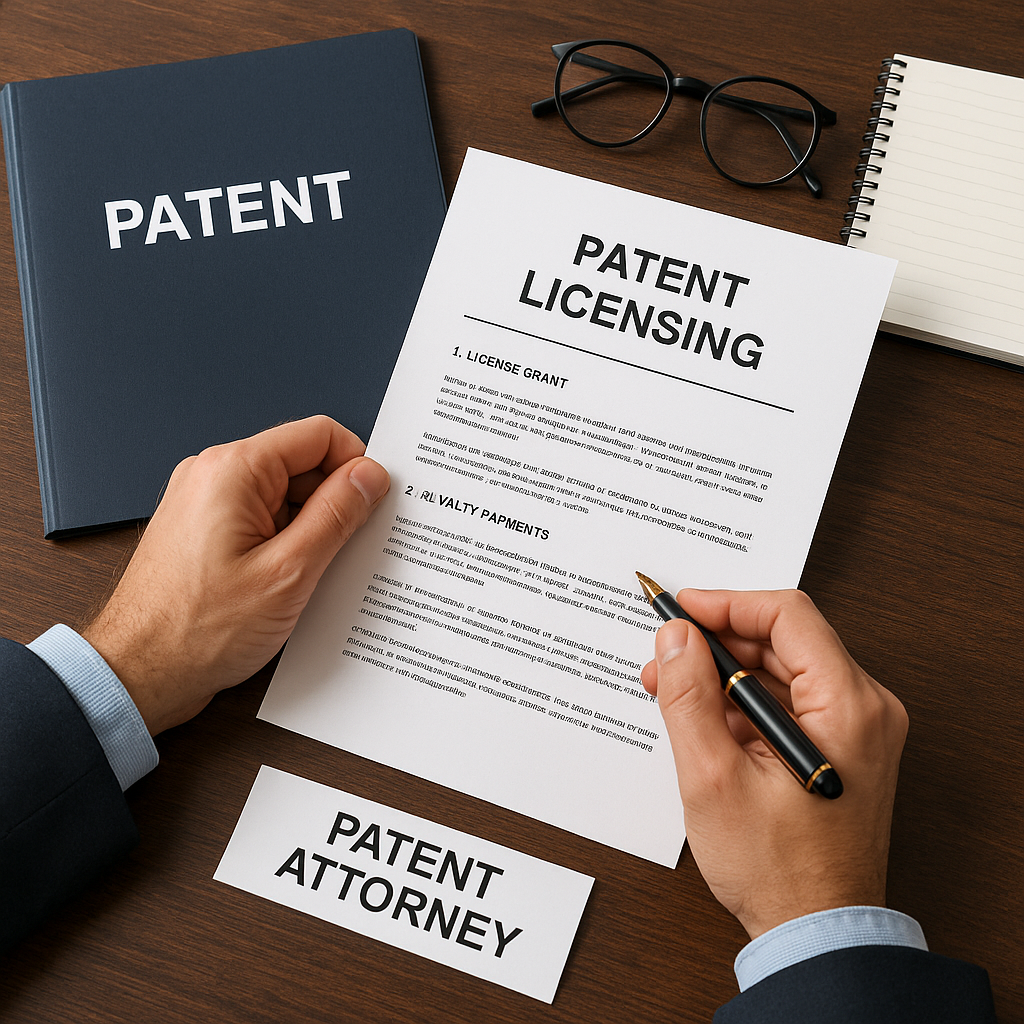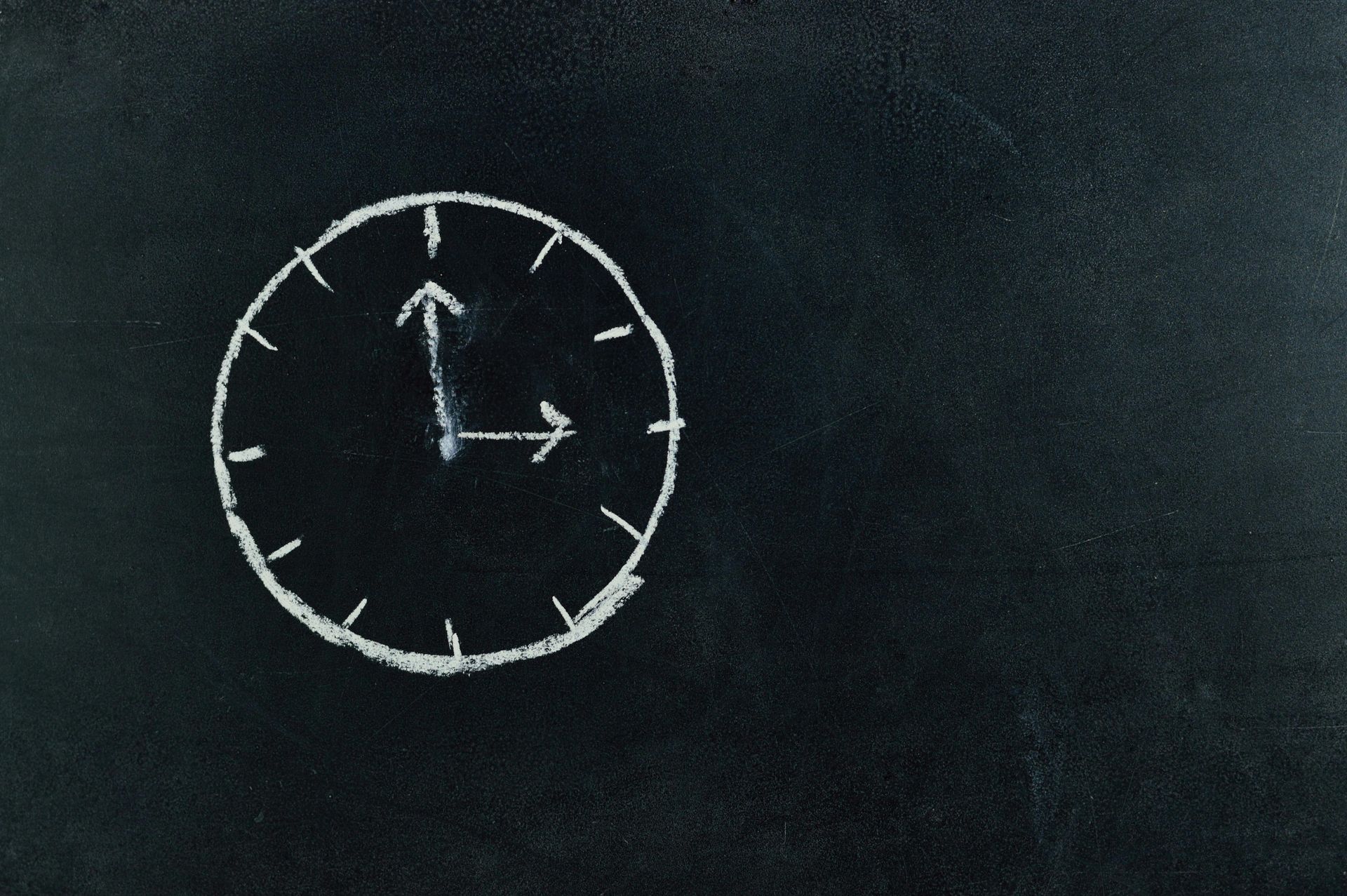Patent Time Bombs: Why Google Lost $32 Million to Sonos
Innovation thrives when inventors and businesses can protect their ideas and brands against copycats and competitors. But what happens when a patent lawsuit uncovers a century-old legal doctrine that even billion-dollar companies must respect? The recent $32 million verdict against Google in its battle with Sonos over smart speaker patents has put a spotlight back on an important but often overlooked concept: prosecution laches. This case isn’t just a dramatic courtroom saga. It’s a wake-up call for companies that develop products in industries built on patents, technology, and fast-moving IP strategies.
If you’re a manufacturer, tech leader, or product developer, understanding the lessons from Sonos v. Google could mean the difference between defending your innovations and facing unexpected risks. Let’s break down what happened, why it matters, and how you can make smarter patent decisions going forward.
Prosecution Laches: The Long Shadow Over Patent Litigation
Prosecution laches isn’t a term most corporate leaders or inventors use every day. But if your company invests in patents, it needs to be on your radar.
Prosecution laches is a legal doctrine that lets courts refuse to enforce a patent if the owner waited too long to pursue it in a way that was unfair to others. The concept balances the inventor’s right to protect their creation with the public’s right to know where they stand—what’s safe to use, what’s off-limits, and where potential risks lurk.
Origins and Purpose
This idea first appeared in courtrooms in the 1920s, after some inventors used “submarine patents.” They’d file applications, then delay and update them for years. While industries grew around these innovations, the patent owners waited, then surfaced with a long list of patents and sued everyone. Courts put a stop to this, and Congress later changed the rules so patents are now limited to 20 years from the application date, not from the date of issue.
By reducing opportunities for secret gamesmanship, the rules aimed to promote transparency and fairness. But recent lawsuits, especially the headline-making battle between Sonos and Google, show that prosecution laches is still very relevant.
The Sonos v. Google Showdown: How Patent Laches Took Center Stage
The Sonos v. Google case highlights how prosecution laches can tilt the outcome of a multi-million-dollar patent lawsuit—and remind businesses to plan their IP strategies with care.
The Backstory: Patents Meet Smart Technology
Sonos, a pioneer in wireless speaker systems, filed a provisional patent application describing methods to manage groups of speakers. Later, Sonos filed a non-provisional application (the only step that can actually become a patent), but this filing didn’t include the full range of content covered in the provisional version. When Sonos finally secured its patents and sued Google, the dispute turned on whether the claims asserted were fairly supported in the final, non-provisional applications or if they relied on “missing” content only listed in their original provisional filing.
This detail mattered because, under U.S. patent law, the journey from provisional application to granted patent shapes what gets protected and what falls into the public domain.
The Legal Battle
- Jury verdict : Sonos won $32 million, with a jury finding Google infringed its patents.
- Judicial reversal : The trial judge, Judge Alsup, overturned the verdict, siding with Google. He ruled that Sonos’s claims weren’t supported in the final application and pointed to prosecution laches—arguing Sonos waited too long and shifted its claims unfairly.
- Appeal brings reversal : Sonos appealed. The appellate court reinstated the $32 million verdict, siding with Sonos that there was adequate support in the original filings.
For a clear breakdown of the doctrine as applied in this case, check out the discussion on Sonos v. Google and prosecution laches.
Modern Patent Law: Key Rule Changes
Prior to 1995, patent terms lasted for 17 years from the patent’s issue date. Deliberate delays could create hidden “time bombs,” where industries invested heavily in technology only to be sued when an old application finally issued as a patent. This was the era of the “submarine patent.”
After 1995, the law changed. Now, patents last 20 years from the date of application—not issuance. This change aimed to close loopholes, but as Sonos v. Google shows, the transition from provisional to non-provisional application can still cause trouble if not managed effectively.
Anatomy of a Patent Lawsuit: The Timeline
Below is a simplified table that outlines the key steps in the Sonos v. Google legal journey, putting the prosecution laches dispute in perspective:

To see the evolving court opinions and the key events, read the summary at Federal Circuit Blog.
What Counts as Prosecution Laches?
In patent disputes, prosecution laches isn’t simply about delay. It’s about whether the delay was unreasonable and whether competitors or the public were harmed by being left in the dark.
Key points courts look at:
- Duration : Was there a long and unexplained time span between the original filing and the final claims?
- Intent : Did the patent owner deliberately manipulate the process for advantage?
- Harm to Others : Did the delay mislead businesses into thinking the field was clear?
The Federal Circuit, in reviewing the Sonos v. Google case, emphasized that normal, good-faith continuation filings or narrowing of claims as products evolve do not usually constitute laches. The burden is high: courts need to see genuine prejudice caused by delay, not just routine patent strategy. More details on modern court standards can be found at The National Law Review’s coverage of the Sonos ruling.
Lessons for Patent Owners: How to Avoid the Sonos-Google Trap
If your company is serious about patents, Sonos v. Google offers lessons that should shape how you prepare, file, and prosecute applications.
Best practices for patent owners:
- Be thorough in provisional applications : Include every feature, option, and alternate embodiment. Don’t rely on future filings to “add it in later.”
- Move efficiently from provisional to non-provisional : Don’t wait needlessly or cut critical details. The more you leave in from your provisional, the stronger your base.
- Use continuations carefully : Filing continuation applications is a valid strategy, but always ensure supporting details are present in the parent applications.
- Consult experienced professionals : Routine filing errors or missed steps often surface years later during a patent lawsuit. Get it right the first time with guidance from attorneys who understand industry-specific needs. Learn more about patent services by Milano IP.
What This Means for Companies Conducting Patent Searches
When your business develops a new product, you want to know if it’s safe to launch. Traditionally, a “freedom to operate” search means looking at granted patent claims. But if recent cases expand how courts see old applications and prosecution history, the task of clearing a product for market just got more complex.
New due diligence steps could include:
- Reviewing not just granted claims but also the prosecution history of potentially relevant patents.
- Analyzing whether there might be claim support in provisional or earlier non-provisional applications.
- Factoring in the increased time and cost for a more detailed legal review—especially in competitive, high-stakes fields.
For expert guidance on this expanded approach, you can see what experienced IP professionals advise on searching and clearance processes in tips for selecting a Philadelphia patent attorney.
A Closer Look: The Role of Continuations and Amendments
In the Sonos case, a pivotal factor was Sonos’s use of continuation applications. This standard practice lets inventors file additional patent applications based on the original, sometimes with updated claims reflecting changes in technology or competitor products.
Continuation strategy is entirely legal and often wise, but it must be managed transparently. When patent owners try to reach back to subject matter not present in the chained non-provisional filings, the risk of prosecution laches rises.
For companies thinking about their own filing strategy, understanding when and how to use continuations—while keeping prosecution history clean—is critical. For a plain-English discussion of why careful management of continuations matters, check this Patently-O summary of the Federal Circuit’s take on prosecution laches.
Strategic Tips to Stay Ahead in Complex Patent Disputes
If your firm’s success depends on products protected by patents, preparation and foresight are your best friends. Here’s how you can put the lessons of the Google v. Sonos patent lawsuit into practice:
- Draft Broad and Specific Claims : Cast a wide net but always support your claims with detailed disclosures in the earliest possible filings.
- Document Everything : Keep meticulous records of each stage, amendment, and correspondence. These materials become part of the public record and matter in future litigation.
- Evaluate Competitor Behavior : Watch what others file and patent, and be ready to revise claims (within legal limits) to cover your competitive edge.
- Factor in International Patents : Strategies and risks may differ in other jurisdictions, so coordinate with global counsel if your business operates overseas. If you need support on patent protection across borders, explore more with international patent services.
What if You’re the One Being Sued?
Not every business is a patent owner; some need to defend themselves in a patent lawsuit. If you face claims, know your options extend beyond challenging the novelty or inventiveness of the claims.
- Push for full disclosure : Request the full prosecution file to see if the claims asserted match the details in the original applications.
- Explore prosecution laches as a defense : Did the other party delay or “daisy-chain” continuations for strategic purposes? Use their history to support your case.
- Consider the cost-benefit : Deep-dive searches and legal challenges will increase costs, but may save much more if successful. Connecting with a Philadelphia patent attorney with deep courtroom experience can help assess your best strategy.
The Broader Impact: Prosecution Laches in Industry
Most patent lawsuits don’t reach the drama of Sonos v. Google. But the case sets a precedent. Large manufacturers, medical device companies, auto parts producers, and tool makers now face potential scrutiny of not just their technical solutions, but the entire history of their patent applications.
Key Takeaways for Industry Leaders:
- Prosecution laches is alive and can impact case outcomes, even in big-money disputes.
- Routine prosecution steps (amendments, continuations) aren’t “bad,” but keeping clean records and strong support in each application is now more important than ever.
- Large verdicts and appeals illustrate that patent law isn’t static. Staying updated lets companies react to change, not get blindsided by it.
For ongoing updates and thoughtful legal analysis on topics like this, many companies follow coverage at sources like MoFo’s insights on Sonos v. Google.
Conclusion
The $32 million Sonos win against Google underscores that even the world’s largest companies face risks when handling intellectual property. The rules and doctrines that govern patents change, and prosecution laches may continue to reshape patent strategy for tech businesses everywhere.
To protect your company’s innovations and avoid costly patent lawsuits, keep application filings thorough, timely, and clearly documented all the way back to the earliest provisional filings. Always conduct deep, detail-oriented patent searches, and integrate prosecution history reviews where stakes are high.
If you have questions or want advice tailored to your unique business, consider contacting Milano IP patent services to safeguard your portfolio and make sure your inventions stay protected.
Want to keep up with the latest on patent disputes and strategies? Subscribe to the Secure Your Creations Podcast, follow us on YouTube, and revisit this blog for regular updates on high-stakes patent litigation and strategies every innovative company should know.
Get a Free Case Evaluation




